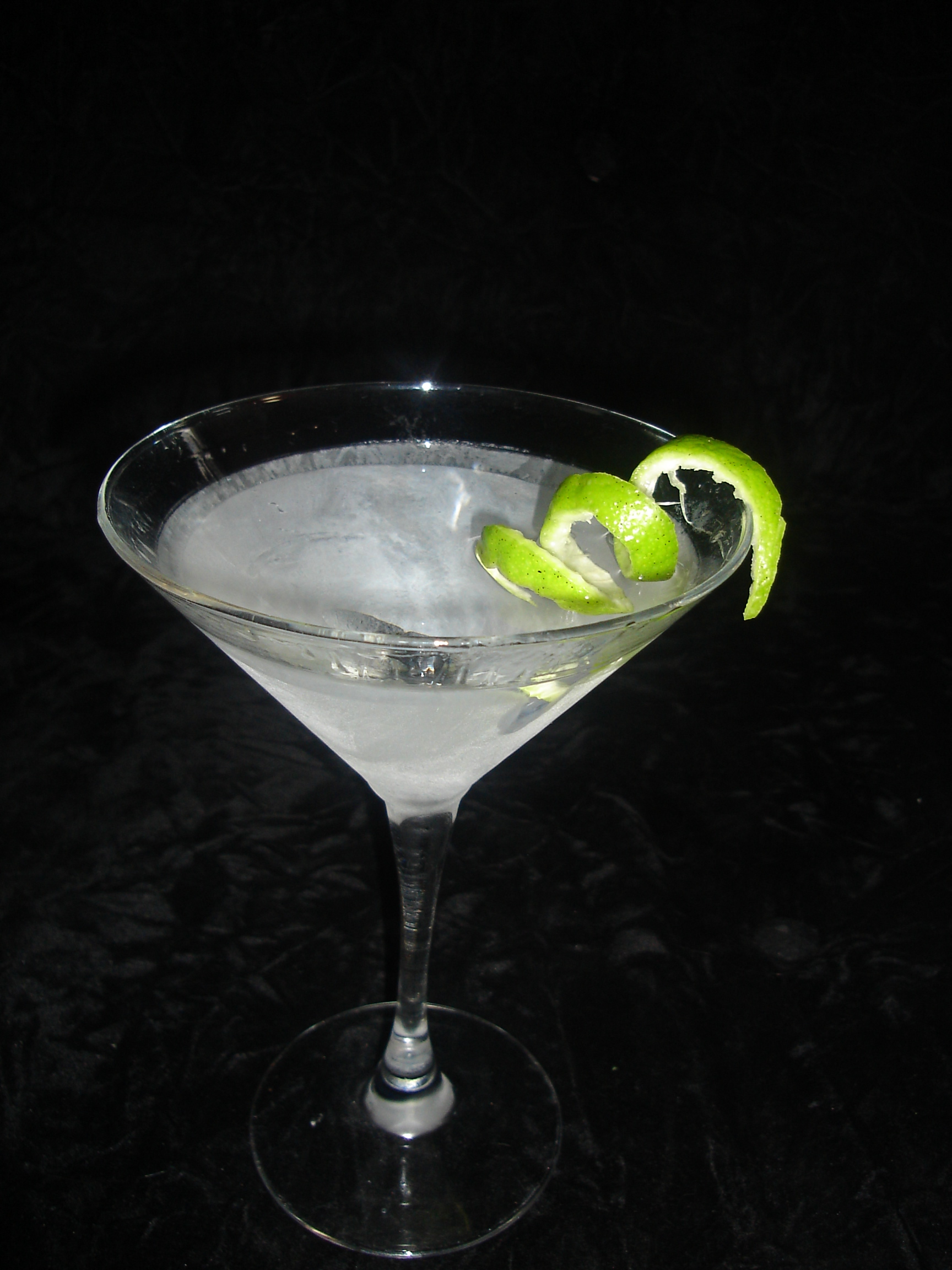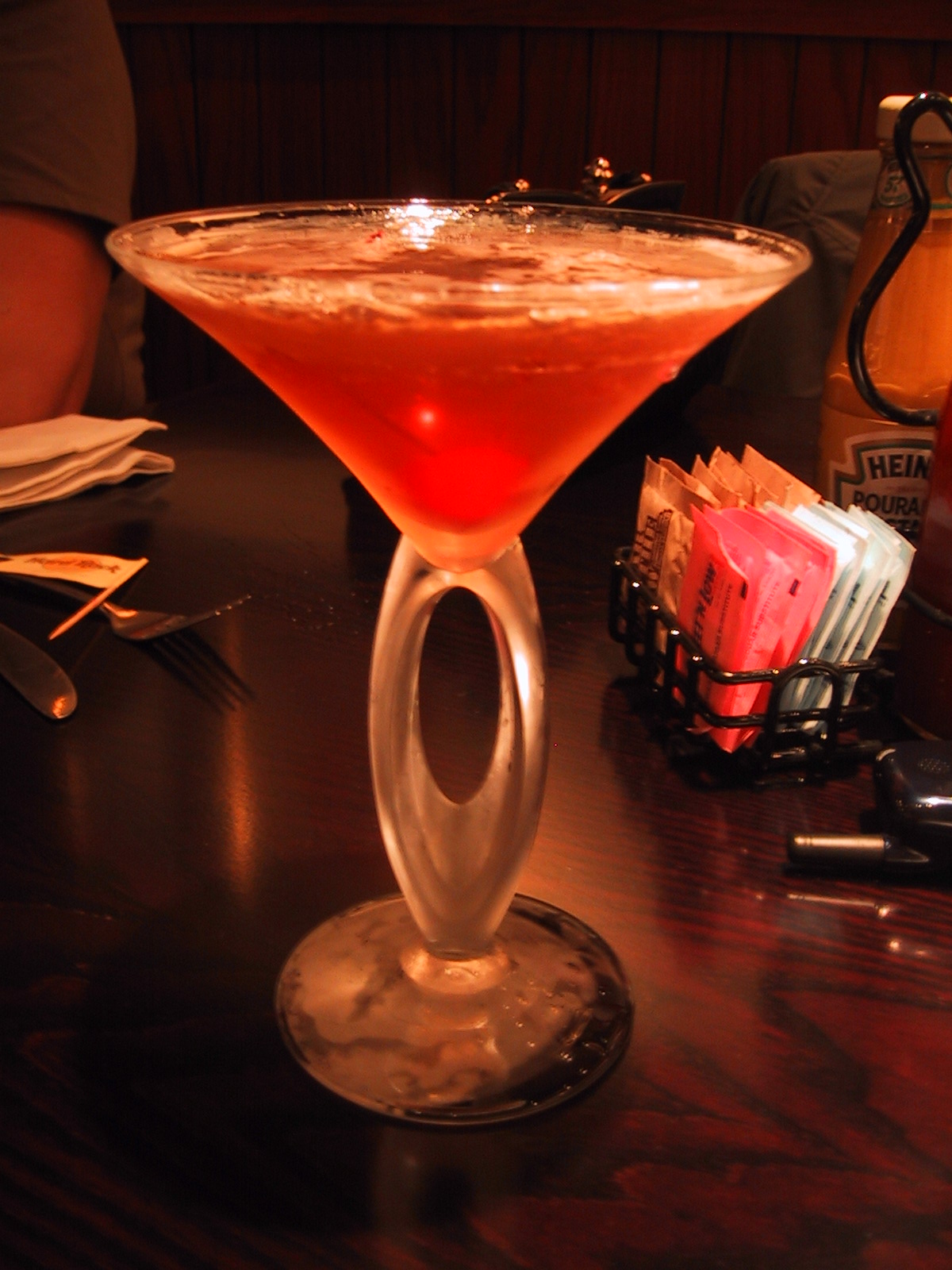|
Cocktail Glass
A cocktail glass is a stemmed glass with an inverted cone bowl, mainly used to serve straight-up cocktails. The term ''cocktail glass'' is often used interchangeably with ''martini glass'', despite their differing slightly. Today, the glass is used to serve a variety of cocktails, such as the martini and its variations ( French martini, vodka martini, espresso martini, appletini), Manhattan, Brandy Alexander, pisco sour, Negroni, cosmopolitan, gimlet, and the grasshopper. History Invented in the late 19th century, its form derives from the fact that all cocktails are traditionally served chilled and contain an aromatic element. Thus, the stem allows the drinker to hold the glass without affecting the temperature of the drink, an important aspect due to the lack of added ice which in other drinks serves to cool the drink, and the wide bowl places the surface of the drink directly under the drinker's nose, ensuring the aromatic element has the desired effect. In the modern d ... [...More Info...] [...Related Items...] OR: [Wikipedia] [Google] [Baidu] |
Negroni
A Negroni is an Italian cocktail, made of one part gin, one part vermouth rosso (red, semi-sweet) and one part Campari, garnished with orange peel. It is considered an apéritif. A traditionally made Negroni is stirred, not shaken; it is built over ice in an old-fashioned or rocks glass and garnished with a slice of orange. Outside of Italy, an orange peel is often used in place of an orange slice. History The drink's origins are not known with certainty. The most widely reported account is that it was first mixed in Florence, Italy, in 1919, at Caffè Giacosa (then called Caffè Casoni), on Via de' Tornabuoni. (The Caffè no longer exists; the site is now occupied by a Giorgio Armani boutique.) Pascal Olivier Count de Negroni concocted it by asking the bartender, Fosco Scarselli, to strengthen his favorite cocktail, the Americano, by adding gin rather than the normal soda water. The bartender also added an orange garnish rather than the typical lemon garnish of the Ameri ... [...More Info...] [...Related Items...] OR: [Wikipedia] [Google] [Baidu] |
Bartending Terminology
Various unique terminology is used in bartending. Definitions and usage Straight, up, and straight up In bartending, the terms "straight up" and "up" ordinarily refer to an alcoholic drink that is shaken or stirred with ice and then strained and served in a stemmed glass without ice. "Straight" ordinarily refers to a single, unmixed liquor served without any water, ice, or other mixer. In this sense, "straight" can sometimes be used as a synonym for ''either'' "straight up" or "neat". Furthermore, "straight" is also a term of art for a particular type of whiskey produced in the United States. United States federal law defines the term "straight whiskey" as whiskey that has met particular requirements for its ingredients, production process, and aging. For example, the label of a bottle of top-shelf bourbon typically identifies the product as "Kentucky straight bourbon whiskey" (since about 95% of all bourbon is produced in Kentucky). While the meaning of "up" and "neat" ... [...More Info...] [...Related Items...] OR: [Wikipedia] [Google] [Baidu] |
1920s In Film
The decade of the 1920s in film involved many significant films. Events The 1920s saw a vast expansion of Hollywood film making and worldwide film attendance. Throughout the decade, film production increasingly focused on the feature film rather than the "short" or "two-reeler." This is a change that had begun with works like the long D. W. Griffith epics of the mid-1910s and became the primary style by the 1920s. In Hollywood, numerous small studios were taken over and made a part of larger studios, creating the studio system that would run the American, Spanish, and Polish pool, open to the public film making until the 1960s. Metro-Goldwyn-Mayer (founded in the middle of the decade) and Paramount Pictures were the highest-grossing studios during the period, with 20th Century Fox, Universal Pictures, United Artists, and Warner Brothers making up a large part of the remaining market. The 1920s was also the decade of the "Picture Palaces": large urban theaters that could seat ... [...More Info...] [...Related Items...] OR: [Wikipedia] [Google] [Baidu] |
Champagne Glass
A champagne glass is stemware designed for champagne and other sparkling wines. The two most common forms are the flute and coupe, both stemmed; holding the glass by the stem prevents warming the drink. Champagne can also be drunk from a normal wine glass, which allows better appreciation of the flavor, at the expense of accentuating the bubbles less. Flute The champagne flute (French:'' flûte à Champagne'') is a stem glass with either a tall tapered conical shape or elongated slender bowl, generally holding about of liquid. The champagne flute was developed along with other wine stemware in the early 18th century as the preferred shape for sparkling wine as materials for drinking vessels shifted from metal and ceramic to glassware. Initially, the flute was tall, conical, and slender; by the 20th century, preferences changed from a straight-sided glass to one which curved inward slightly near the lip. This inward taper is designed to retain champagne's signature carbonat ... [...More Info...] [...Related Items...] OR: [Wikipedia] [Google] [Baidu] |
International Exhibition Of Modern Decorative And Industrial Arts
The International Exhibition of Modern Decorative and Industrial Arts (french: Exposition internationale des arts décoratifs et industriels modernes) was a World's fair held in Paris, France, from April to October 1925. It was designed by the French government to highlight the new ''style moderne'' of architecture, interior decoration, furniture, glass, jewelry and other decorative arts in Europe and throughout the world. Many ideas of the international avant-garde in the fields of architecture and applied arts were presented for the first time at the Exposition. The event took place between the esplanade of Les Invalides and the entrances of the Grand Palais and Petit Palais, and on both banks of the Seine. There were 15,000 exhibitors from twenty different countries, and it was visited by sixteen million people during its seven-month run. The ''Style Moderne'' presented at the Exposition later became known as "Art Deco", after the name of the Exposition. The idea and the organiz ... [...More Info...] [...Related Items...] OR: [Wikipedia] [Google] [Baidu] |
Speakeasy
A speakeasy, also called a blind pig or blind tiger, is an illicit establishment that sells alcoholic beverages, or a retro style bar that replicates aspects of historical speakeasies. Speakeasy bars came into prominence in the United States during the Prohibition era (1920–1933, longer in some states). During that time, the sale, manufacture, and transportation ( bootlegging) of alcoholic beverages was illegal throughout the United States. Speakeasies largely disappeared after Prohibition ended in 1933. The speakeasy-style trend began in 2000 with the opening of the bar Milk & Honey. Etymology The phrase "speak softly shop", meaning a "smuggler's house", appeared in a British slang dictionary published in 1823. The similar phrase "speak easy shop", denoting a place where unlicensed liquor sales were made, appeared in a British naval memoir written in 1844. The precise term "speakeasy" dates from no later than 1837 when an article in the '' Sydney Herald'' newspaper in ... [...More Info...] [...Related Items...] OR: [Wikipedia] [Google] [Baidu] |
Prohibition In The United States
In the United States from 1920 to 1933, a Constitution of the United States, nationwide constitutional law prohibition, prohibited the production, importation, transportation, and sale of alcoholic beverages. The alcohol industry was curtailed by a succession of state legislatures, and finally ended nationwide under the Eighteenth Amendment to the United States Constitution, ratified on January 16, 1919. Prohibition ended with the ratification of the Twenty-first Amendment to the United States Constitution, Twenty-first Amendment, which repealed the Eighteenth Amendment on December 5, 1933. Led by Pietism, pietistic Protestantism in the United States, Protestants, prohibitionists first attempted to end the trade in alcoholic drinks during the 19th century. They aimed to heal what they saw as an ill society beset by alcohol-related problems such as alcoholism, Domestic violence, family violence, and Saloon bar, saloon-based political corruption. Many communities introduced al ... [...More Info...] [...Related Items...] OR: [Wikipedia] [Google] [Baidu] |
Grasshopper (cocktail)
A Grasshopper is a sweet, mint-flavored, after-dinner drink. The name of the drink derives from its green color, which comes from crème de menthe. A bar in the French Quarter of New Orleans, Louisiana, Tujague's, claims the drink was invented in 1918 by its owner, Philip Guichet. The drink gained popularity during the 1950s and 1960s throughout the American South. Composition A typical Grasshopper cocktail consists of equal parts green crème de menthe, white crème de cacao, and cream shaken with ice and strained into a chilled cocktail glass. Variations A "Vodka" or "Flying" Grasshopper replaces the cream with vodka. A "Frozen" Grasshopper adds mint ice cream to create a more dessert-like drink. An "After Eight" adds a layer of dark chocolate liqueur to the crème de menthe, crème de cacao and cream. In the North Central United States, especially Wisconsin, Grasshoppers are blended drinks, with ice cream substituted for cream. A related variation is the "Grasshopper mil ... [...More Info...] [...Related Items...] OR: [Wikipedia] [Google] [Baidu] |
Gimlet (cocktail)
The gimlet () is a cocktail made of gin and lime cordial. A 1928 description of the drink was: gin, and a spot of lime. A description in the 1953 Raymond Chandler novel '' The Long Goodbye'' stated that "a real gimlet is half gin and half Rose's lime juice and nothing else." This is in line with the proportions suggested by ''The Savoy Cocktail Book'' (1930), which specifies one half gin and one half lime juice. However, modern tastes are less sweet, and generally provide for up to four parts gin to one part lime cordial. The derivation of the name of the cocktail is contested. It may be named after the tool for drilling small holes (alluding to its "piercing" effect on the drinker) or after the surgeon Rear-Admiral Sir Thomas Gimlette (1857–1943), who is said to have first added lime cordial to gin to help combat the ravages of scurvy on long voyages. Etymology The word "gimlet" used in this sense is first attested in 1928. The most obvious derivation is from the tool for dr ... [...More Info...] [...Related Items...] OR: [Wikipedia] [Google] [Baidu] |
Cosmopolitan (cocktail)
A cosmopolitan, or informally a cosmo, is a cocktail made with vodka, Cointreau, cranberry juice, and freshly squeezed or sweetened lime juice. History The International Bartenders Association recipe is based on vodka citron, lemon-flavored vodka. The cosmopolitan is a relative of cranberry coolers like the Cape Codder (cocktail), Cape Codder. . Online source viewable aThe Big Appleblog by Barry Popik. Though often presented far differently, the cosmopolitan also bears a likeness in composition to the kamikaze (cocktail), kamikaze cocktail. The origin of the cosmopolitan is disputed. The 1930s While the cocktail is widely perceived to be a more modern creation, there is a recipe for a Cosmopolitan Daisy which appears in ''Pioneers of Mixing at Elite Bars 1903–1933'', published in 1934. Jigger of Gordon's Gin ( Beefeater) 2 dash Cointreau ( Cointreau) Juice of 1 Lemon ( Lemon Juice) 1 tsp [.5 cl] Raspberry Syrup (homemade) Shake with ice and strain into a cocktail ... [...More Info...] [...Related Items...] OR: [Wikipedia] [Google] [Baidu] |

.jpg)




